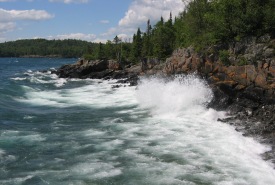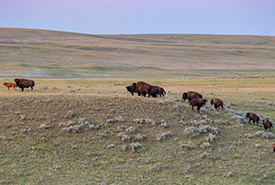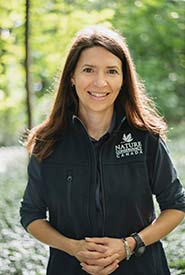Celebrating Indigenous-led conservation at NCC — today and every day

Waves crash on the northwestern Lake Superior Coast, Ontario (Photo by John Anderson)
The dynamics of conservation in Canada are changing. Today, Indigenous Peoples are increasingly being heard and recognized as conservation decision-makers and stewards of the land.
At the Nature Conservancy of Canada (NCC), we welcome and support this improved and expanded approach to conservation.
This month is National Indigenous Peoples Month and today, June 21, is National Indigenous Peoples Day. Today we celebrate and honour the leadership of the Indigenous community and the contributions they have made to conservation. NCC strives to be a trusted partner and ally with Indigenous Nations and communities in joint conservation.
Indigenous conservation leadership in Canada can be seen across the land, specifically with the creation and growth of Indigenous Protected and Conserved Areas (IPCAs). IPCAs are natural spaces that are identified and protected by Indigenous Nations and communities. Not only do these lands help to sustain Indigenous livelihood and culture, but they also help to sustain the health of the world. IPCAs represent a long-term commitment to conservation, led and managed by Indigenous communities, and protect both the land and Indigenous rights and responsibilities. Engaging, building and maintaining relationships with Indigenous Peoples in the areas we work is a priority for NCC.
Indigenous Peoples continue to be leaders in the conservation of their traditional territories, and organizations such as NCC have much to learn to become more respectful land managers and conservationists. NCC also has an opportunity to support Indigenous communities and Nations to achieve their conservation and stewardship goals. We believe by working together on the land, we can achieve great things in restoring and conserving the natural environment that we collectively value.

Bison at Old Man on His Back Prairie and Heritage Conservation Area, SK (Photo by Jason Bantle)
Recently, The Key First Nation translocated 40 mashkode-bizhiki (plains bison) to re-establish a new herdin Saskatchewan, with support from NCC and others.
Bison are an iconic symbol of the grasslands. Prior to European colonization, they numbered in the tens of millions and were relied upon as a staple in the lives of Indigenous Peoples. By the 1880s, they were nearly extinct due to over-hunting by settlers, resulting in economic, spiritual and cultural devastation for Indigenous Peoples on the Prairies. Supporting the return of threatened species of cultural significance to Indigenous communities is just one important pathway NCC is taking toward Reconciliation.
NCC has also made it a priority under our Indigenous Conservation Engagement Framework to ensure staff are educated about the history between Indigenous and non-Indigenous nations in Canada and the resilience shown by Indigenous communities then, now and in the future.
Although sometimes difficult, without acknowledging the history of conservation and the challenges ahead, we cannot grow as an organization. NCC accepts the challenges we face, is committed to learning from and alongside Indigenous communities, and embraces the opportunities to multiply our impact alongside and led by Indigenous communities as we commit to be part of the solution.


